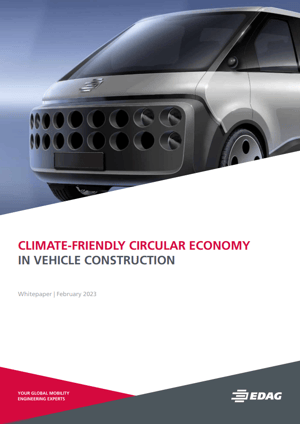On the Way to Climate-Friendly Vehicle Construction

Manufacturers and distributors in the market for smartphones and notebooks offer "refurbished" devices. These are used devices, the components of which are checked and replaced only if necessary. On the one hand, having an extended service life instead of a "here today gone tomorrow" mentality reduces impact on the climate and environment, since fewer new components need to be produced, and valuable resources are conserved. On the other hand, the concept also saves the customer money.
Anyone who thinks this is impossible in vehicle construction is mistaken. A consortium led by the EDAG Group has developed a concept for minibuses and transporters in the 3.5 t class which is capable of significantly reducing the carbon footprint during production. There are, of course, a number of conditions to be met – but the technologies and materials are available.
The most important precondition is that components and functional groups generally have a long service life. For this reason, components made of carbon fibre reinforced polymers (CFRP) are used instead of metal in areas that are subject to high stress. These can outlast the life cycle of an individual vehicle.
The second precondition is replaceability. To this end, a modular system has been developed, which, among other things, provides for three main modules – front end, battery box and rear end –, and also defined interfaces. A concept of this type also increases flexibility, as different external forms can be created on the platform, for example a minibus, enclosed transporter or open flatbed truck.
Find out more about what other innovations the concept includes and how safety and reliability can be guaranteed in our white paper "Climate-Friendly Circular Economy in Vehicle Construction", which you can download here.